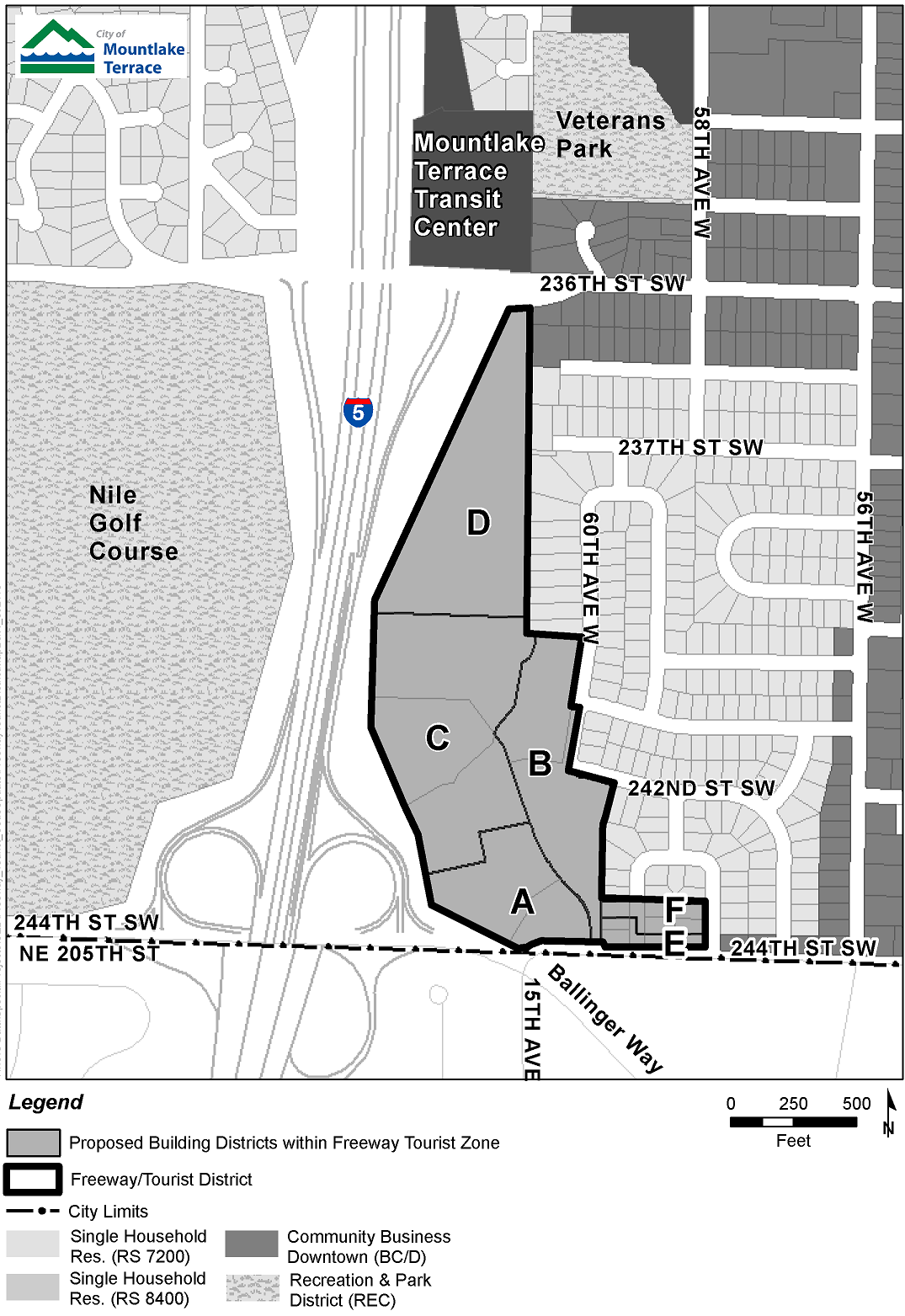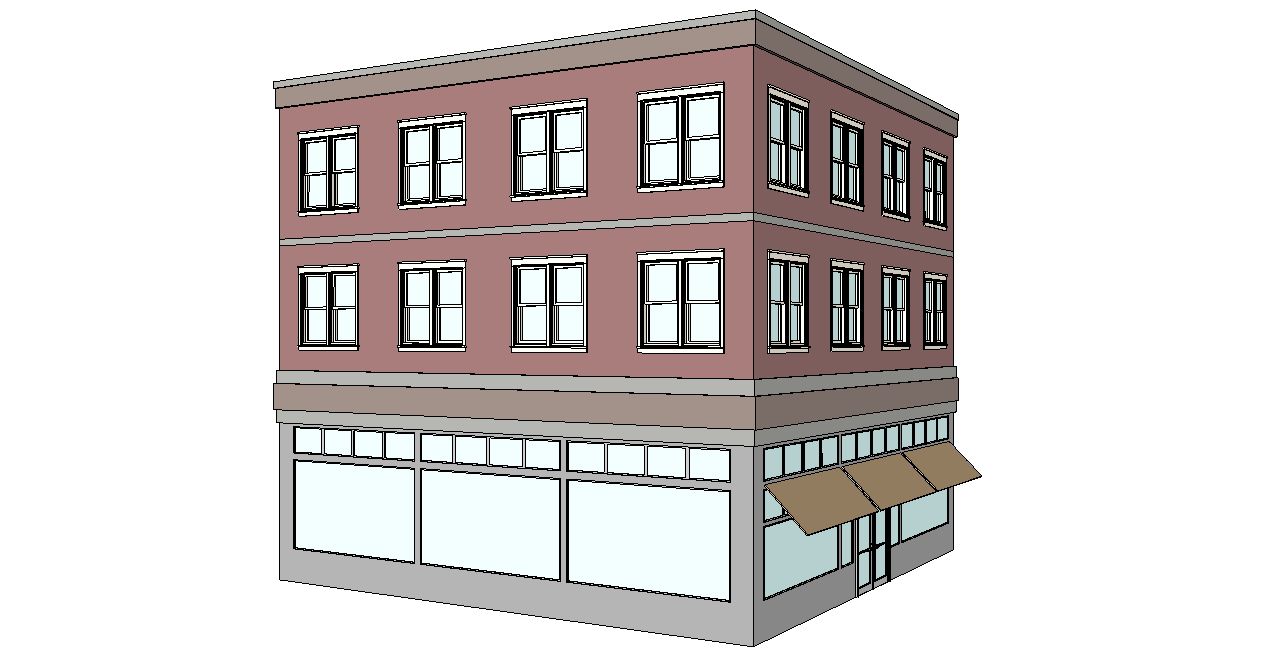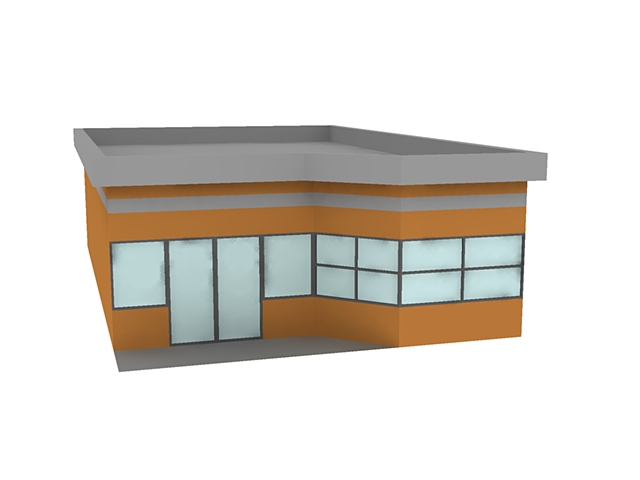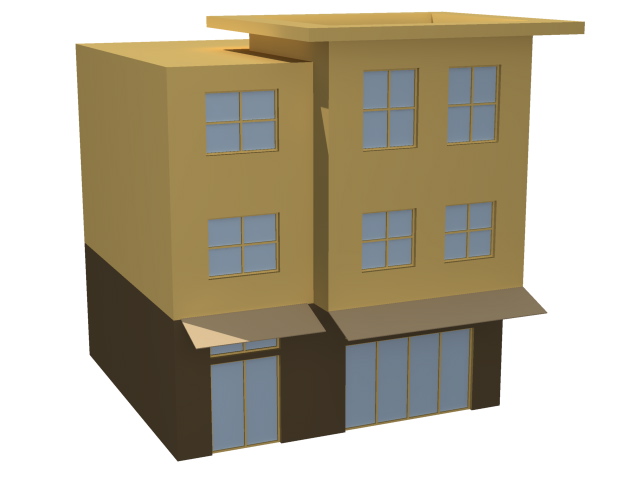Chapter 19.60
F/T – FREEWAY/TOURIST DISTRICT
Sections:
19.60.050 Building types and dimensional requirements.
19.60.060 Landscaping and open space requirements.
19.60.070 Special regulations.
19.60.090 Compliance of existing building and site with design standards.
19.60.010 Purpose.
A. The purpose of this chapter is to provide for an attractive commercial and mixed-use district that:
1. Serves as a welcoming gateway to the community;
2. Is a location for regionally scaled commercial uses, mixed-use, and transit-oriented development;
3. Takes advantage of the area’s high visibility and access to I-5 and other arterials;
4. Buffers the adjacent single-household zoning district from the impacts of more intense uses; and
5. Maximizes tax revenues to the City for the provision of public services.
B. If provisions of this chapter conflict with other chapters of the zoning code, the provisions of this chapter shall prevail. (Ord. 2639 § 2, 2014; Ord. 2551 § 2, 2010).
19.60.020 Definitions.
The following definitions apply specifically to this chapter:
“Circulator street” means the primary street that connects building districts A, B, and C, and as appropriate in the future any other parts of the Freeway/Tourist district, and that provides access to multiple businesses and directly connect with an arterial.
“F/T design standards” means the standards that are adopted under MTMC 19.60.070(K). Such standards may include but are not limited to provisions for site design, building design, and signage.
“F/T district” or “Freeway/Tourist Zone” means the Freeway/Tourist zoning district, as identified by the City’s Official Zoning Map.
“Secondary street frontage” means the area of land immediately adjacent to a nonarterial street.
“Tree buffer” means the forested area located on the eastern portions of building districts C and D that buffers the adjacent single-household residential zone from the F/T district. (Ord. 2551 § 2, 2010).
19.60.030 Land uses.
The land uses identified in the table in this section are allowed in the F/T district unless otherwise prohibited by another provision of the municipal code. The manner in which the uses are allowed is also shown in the following table. All uses are subject to additional requirements of the municipal code. The table lists potential uses in the left-hand column with major categories of uses shown in bold font and specific uses, as appropriate, listed in standard font directly below the associated major use category. The three columns on the right correspond to three methods for allowing the uses; these are abbreviated as: “P” for permitted use, “C” for conditional use, and “A/P” for accessory permitted use. An “X” in a column indicates the method by which the use is allowed. Footnotes provide additional information that shall be applied. If a use is not listed in the table below or an “X” is not marked to indicate the method of allowing the use, it shall not be permitted in this district unless otherwise specifically allowed pursuant to this title or MTMC Title 18.
|
Type of Use |
P |
C |
A/P |
|---|---|---|---|
|
Commercial |
|||
|
Commercial facilities |
X1 |
|
|
|
Light Industry |
|||
|
Manufacturing facilities |
|
|
X2 |
|
Medical/Healthcare |
X3 |
|
|
|
Miscellaneous |
|||
|
Storage facilities |
|
|
X4 |
|
Parking Facilities |
|
|
X |
|
Public Service Facilities |
|
X |
|
|
Recreation/Entertainment/Cultural Facilities |
|||
|
Recreation facilities |
X5 |
|
|
|
Entertainment facilities |
X |
|
|
|
Residential |
|||
|
Motels, hotels, inns |
X |
|
|
|
Multi-household dwellings |
X6 |
|
|
|
Transportation Facilities |
X |
|
|
|
School/Daycare |
|||
|
Adult or child daycare (not associated with a nonprofit facility) |
X7 |
X8 |
|
|
Daycare centers/preschools |
X7 |
X8 |
|
|
Higher education facilities |
X7 |
X8 |
|
|
Schools – Commercial |
X7 |
X8 |
|
1 Excluding commercial facilities that dispense fossil fuels or provide automotive repair.
2 Permitted only for processing and assembly of retail merchandise, at least some of which is displayed and sold on site, and not to exceed a gross floor area of 5,000 square feet.
3 Excluding hospitals and ambulance services.
4 Limited to a floor area that is no more than 15 percent of the building’s total floor area.
5 Provided that the recreation facilities shall be contained within a fully enclosed building.
6 Only as part of a mixed-use development, consistent with special regulations in MTMC 19.60.070.
7 Allowed as a permitted use up to 35 percent of commercial area square footage in any single building. “Single building” for the purpose of the identified land use category of this subsection shall include any buildings located on the same lot and connected by a walkway or driveway outside of a public right-of-way or by a building.
8 Allowed as a conditional use over 35 percent of commercial area in any single building. “Single building” for the purpose of the identified land use category of this subsection shall include any buildings located on the same lot and connected by a walkway or driveway outside of a public right-of-way or by a building.
(Ord. 2735 § 2, 2018; Ord. 2551 § 2, 2010).
19.60.040 Building districts.
A. The Freeway/Tourist Zone shall be comprised of the following building districts, which correspond to the building districts map in subsection B of this section:
1. Building District A;
2. Building District B;
3. Building District C;
4. Building District D;
5. Building District E; and
6. Building District F.
B. The Freeway/Tourist Zone building districts map is as follows:
C. As required by this chapter, certain regulations and provisions shall apply to one or more of the building districts identified in this section. (Ord. 2551 § 2, 2010).
19.60.050 Building types and dimensional requirements.
A. Only the following general building types are allowed in each building district, as follows:
1. Building Districts A through E: Commercial and Mixed-Use Buildings. An example of this building type is shown as follows:
2. Building District F:
a. One-Story Commercial Buildings. An example of this building type is shown as follows:
b. Two- or Three-Story Townhomes or Live-Work Units. An example of this building type is shown as follows:
B. The dimensional requirements for the F/T zone are listed in the dimensional requirements table of this subsection, except as otherwise stated in MTMC 19.60.070, Special regulations.
Table 19.60.050(B)
Freeway/Tourist Zone Dimensional Requirements by Building District
|
Type |
Building District |
|||||
|---|---|---|---|---|---|---|
|
A |
B |
C |
D |
E |
F |
|
|
Build-to Line (BTL)1 |
20–30 |
N/A |
N/A |
N/A |
15 |
N/A |
|
Min. Tree Buffer2 |
N/A |
N/A |
60 |
60 |
N/A |
N/A |
|
Min. Front Setback3 |
N/A |
N/A |
15 |
15 |
15 |
15 |
|
Min. Side Setback4 |
10 |
10 |
N/A |
N/A |
5 |
5 |
|
Min. Rear Setback5 |
N/A |
15 |
N/A |
N/A |
10 |
10 |
|
Min. Building Stories |
N/A |
N/A |
3 |
3 |
N/A |
N/A |
|
Max. Building Stories/Height6 |
4/50 |
3/40 |
4/60 |
4/50 |
3/40 |
3/35 |
|
Max. Building Stories/Height – Transfer of Development Rights (TDR7) or Special8 |
6/95 |
4/50 |
20/285 |
12/180 |
5/65 |
4/50 |
|
Open Space/Landscape as a Minimum Percent of Lot9 |
15% |
15% |
10% |
10% |
15% |
20% |
Key: All numbers shown in the Building District columns are the required measurement in feet, except for number of building stories, or as otherwise indicated. “N/A” means not applicable. Other regulations apply.
1 The required BTL in the F/T District is measured from the back of curb line on the adjacent arterial (i.e., in Districts A and E from the back of curb on 244th Street SW).
2 This means the required forested (treed) buffer area on the east side of the subject property as measured east-west to buffer the adjacent single-household residential zone.
3 This means the minimum required distance for any building to be set back from the front property line (i.e., the property line most parallel to the primary street that the lot faces) except that on secondary street frontages, buildings in Districts E and F shall measure the setback from back of curb or property line, whichever is closer to the public right-of-way.
4 This means the minimum required distance for any building to be set back from the side property line (i.e., the property line most perpendicular to the front property line).
5 This means the minimum required distance for any building to be set back from the rear property line (i.e., the property line most opposite to the front property line).
6 The first number for each building district indicates the maximum number of stories a building shall have and the second number indicates the total maximum building height, except to the extent that “TDR” or “Special” applies.
7 The provision for “TDR” applies only under a TDR Program per Chapter 18.40 MTMC. Also, see the above footnote.
8 The provision for “Special” applies only under MTMC 19.60.070(S).
9 This means the minimum required open space area as a percentage of the lot area of the subject parcel, excluding any required minimum tree buffer. See MTMC 19.60.060 for more detail.
(Ord. 2639 § 3, 2014; Ord. 2551 § 2, 2010).
19.60.060 Landscaping and open space requirements.
A. The open space/landscape area identified in MTMC 19.60.050 represents the minimum portion of open space or landscape area required. It shall not include the tree buffer area located in building districts C and D. At times, to meet additional requirements of this chapter and other codes, other landscaped areas will be required.
B. Landscaping should be appropriate to urban areas and may include decorative hardscape such as pavers or brick walkways and decorative retaining walls. It may also include screening of parking areas, landscaping of setback areas, and providing usable outdoor space, including on-site pedestrian activity areas. In general, all areas not used for building or parking shall be landscaped; provided, that landscaping requirements shall not apply to the tree buffer area. Landscaping shall be consistent with the site design section of the F/T design standards. (Ord. 2551 § 2, 2010).
19.60.070 Special regulations.
Special regulations, as specified below, shall apply to certain uses and locations in the F/T district.
A. An existing single-household dwelling legally built prior to October 1, 2010, may continue to be used as a single-household dwelling to the extent it meets other applicable codes. The dwelling may also be rebuilt, repaired, expanded, improved, and otherwise changed for human occupancy, subject to the standards in MTMC 19.60.090.
B. Sexually oriented businesses/adult entertainment establishments shall not be permitted.
C. A circulator street shall be provided from 244th Street SW into the development known as Gateway Place and encompassing building districts A, B, and C. All lots within building districts A, B, and C shall have direct access from the circulator street. Direct access may be permitted to extend into and through building district D.
D. Multiple-household residential development shall be allowed; provided, that commercial uses, excluding parking facilities, are located on the ground floor facing and adjacent to the circulator street or public street and comprise the majority of the ground floor building area. On the ground floor, residential use is limited to no more than 15 percent of the floor area.
E. Bicycle storage and parking shall be provided as follows:
1. Multiple-household dwellings shall be subject to the same bicycle storage standards as required within the RM districts pursuant to Chapter 19.35 MTMC.
2. Commercial uses shall be subject to the bicycle parking standards set forth in MTMC 19.125.130(B).
F. All uses shall be conducted wholly within an entirely enclosed building except for the following:
1. Large-scale retail items, such as vehicles and manufactured homes; provided, that the items are actively being offered for sale from a retail store on the same site;
2. Parking facilities and loading areas, for motor vehicles and bicycles, excluding industrial type vehicles unless actively engaged in on-site construction, repairs, or loading;
3. Outdoor advertising structures and signage; and
4. Pedestrian activity areas, plazas, and outdoor cafes.
G. The storage of hazardous waste shall be allowed only as an accessory use to a legally established primary use of the property and shall be managed subject to all applicable federal, state, and local statutes.
H. Any use that includes emergency vehicles as part of its operation shall be designed for emergency vehicle egress that is as safe as possible for pedestrians and traffic.
I. Street improvements, including curb, gutter, sidewalk, and planting area consistent with the F/T design standards, and all necessary utilities shall be required to be installed for any lot that is being developed where such improvements are lacking or inconsistent with current City standards; provided, that certain minor improvements or alterations, pursuant to this title, shall not of themselves trigger this requirement.
J. Vehicle Parking Standards.
1. For nonresidential uses, vehicle parking shall comply with the parking standards set forth in Chapter 19.125 MTMC; provided, that in building districts E and F, the first 2,000 square feet of a retail or eating/drinking establishment use on a single lot shall be exempt from the minimum parking requirements as long as four available parking spaces are located within 200 feet.
2. For multiple-household dwellings, excluding townhomes and live-work units, off-street vehicle parking shall be provided in a total amount that equals at least three-quarter parking space per studio or one bedroom unit; one parking space per unit of two or less bedrooms, and one-half additional parking space for each bedroom beyond two bedrooms in a unit, except as otherwise allowed under MTMC 19.125.060. Parking spaces must also include guest or flexible space that is not contained within a private dwelling, at a ratio of at least one space for every four dwelling units, unless a parking study documents to the satisfaction of the Director, in consultation with the City’s traffic engineer, that a different ratio of parking is appropriate.
3. For townhomes and live-work units, two off-street parking spaces are required per unit. At least one of the two required parking spaces must be in a garage within the townhome or live-work unit.
K. Design Standards. To assure an attractive, pedestrian-friendly environment, all development occurring within the F/T district upon the effective date of the ordinance codified in this section, unless otherwise exempted by this chapter, shall comply with the F/T design standards, which are attached to the ordinance codified in this section and adopted by reference as though fully set forth herein and which shall be available from the Department. If the F/T design standards appear to conflict with a provision of another chapter of this title, said design standards shall prevail within the F/T district.
L. Townhomes and live-work units are exempt from the F/T design standards but shall comply with building and site standards set forth in the multifamily design standards.
M. Any development of building districts C and D shall be designed in a manner that allows a future roadway to connect directly with 236th Street SW, as approved by the Director, in order to ensure future access from 236th Street SW, consistent with the Comprehensive Plan Transportation Element.
N. For building districts C and D, a minimum tree buffer is required as specified in MTMC 19.60.050(B). The tree buffer shall primarily consist of a forested area of mature native trees and may be accompanied by younger trees and understory vegetation. Trees in the tree buffer area shall not be disturbed or removed, except as necessary for forest management or safety and subject to any studies and permits required by the municipal code.
O. Street Frontages. A pedestrian activity area of at least 12 feet in width from the back of curb shall be provided along the entire frontage of vacant property that is being developed and, as required by MTMC 19.60.090, along the entire frontage of property that is being redeveloped. The pedestrian activity area is subject to the F/T design standards adopted under subsection K of this section.
P. Undergrounding of power and other utility lines is required for all development in building districts A, B, C, and D. The placement of power poles, except as needed on a temporary basis during construction, is prohibited in building districts A, B, C, and D. Undergrounding of power in building districts E and F is subject to the code requirements that apply generally to other areas of the City.
Q. Chapter 19.126 MTMC shall regulate electric vehicle infrastructure.
R. The provision for maximum height under a transfer of development rights program is subject to the requirements of Chapter 18.40 MTMC.
S. Not including any TDR credits under Chapter 18.40 MTMC, building height in districts C and D is allowed up to a maximum of eight stories, not to exceed 100 feet, if the Director finds that one of the following conditions is met and up to a maximum of 12 stories, not to exceed 180 feet, if the Director finds that two or more of the following conditions are met:
1. The building meets standards for LEED Gold or for an equivalent rating system approved by the Director;
2. Low impact stormwater management techniques are used that exceed what would otherwise be required for the development;
3. The development provides exceptional stream buffer restoration and enhancement together with a continuous multi-use path or trail and public space amenities within and adjacent to the critical area buffers to connect with the transit station; or
4. A public plaza is provided that is accessible from a public right-of-way and that includes artwork and landscaping.
T. The locational and area standards of this chapter and of any other regulations in this title pertaining to development under this chapter do not have to be met on individual lots, parcels or tracts developed under the provisions of Chapter 17.05 MTMC, Binding Site Plans, or Chapter 17.09 MTMC, Fee Simple Unit Lot Subdivisions; provided, that they are met on the collective lots, parcels and/or tracts in a binding site plan or fee simple unit lot subdivision and that all standards otherwise applicable to the outer perimeter of individual lots (e.g., setbacks, landscaping and buffers) are met around the outer perimeter of the binding site plan or fee simple unit lot subdivision. (Ord. 2660 § 10, 2015; Ord. 2639 § 4, 2014; Ord. 2553 § 8, 2010; Ord. 2551 § 2, 2010).
19.60.080 Special use.
Wireless communication facilities are regulated under Chapter 19.137 MTMC. (Ord. 2551 § 2, 2010).
19.60.090 Compliance of existing building and site with design standards.
A. For expansion, reconstruction, alteration, or conversion of legal nonconforming buildings existing prior to October 30, 2010, the F/T design standards, as adopted pursuant to MTMC 19.60.070(K), shall be applied in conformance with this section, except that in no case shall an expansion, reconstruction, alteration or conversion result in greater inconsistency with said design standards. Other provisions of the municipal code shall also apply to the expansion, reconstruction, alteration, or conversion of a building or use.
B. F/T design standards do not apply to single-household dwellings that are continuing in single-household use except as provided under MTMC 19.60.070(A).
C. F/T design standards shall apply to existing buildings pursuant to certain types of change, as indicated by the Design Standard Applicability Table in this subsection.
Design Standard Applicability Table
|
Type of Change |
Design Standard Applicability |
|---|---|
|
No Change Reuse of a vacant building by the same use as the immediately prior legally established use; provided, that such use is permitted by this chapter. |
N/A. |
|
Expansion (minor) For a building expansion that creates a new floor area that is equal to less than 50 percent of the existing building floor area, but in no case is more than 5,000 square feet. |
Building design standards shall apply to any new exterior wall or roofline. If the expansion, including any other building alterations, during a 60-month period, has a value that exceeds 50 percent of the assessed value of all the buildings on the lot, pedestrian activity area requirements shall also apply consistent with F/T design standards.1 |
|
Expansion For a building expansion that adds a new floor area equal to at least 50 percent of the existing building’s floor area or at least 5,000 square feet, whichever is less. |
Building design standards shall apply to any new exterior wall or roofline. F/T site design standards for pedestrian activity areas shall also apply.1 |
|
Demolition or Loss For demolition or casualty loss replacement that would replace or reconstruct all or substantially all of the building. |
All F/T design standards1 shall apply to the entire replacement building and the lot on which it is located; provided, that in the case of multiple buildings on the same lot, the F/T design standards shall apply only to the portion of the lot related to the building being substantially or entirely replaced or reconstructed. |
|
Conversion For conversion of an existing building to a new use; provided, that building alterations do not have a combined value greater than 50 percent of the assessed value of all buildings on the lot. |
Compliance with site design standards for pedestrian activity areas is required.1 Building design standards shall apply to any new exterior wall. Any changes to an existing exterior wall or roof shall increase the building’s conformance with building design standards. |
|
Alterations For building alterations, including any expansions, that during a five-year period have a combined value of greater than 50 percent of the assessed value of the building at the beginning of the five-year period. |
Compliance with building design standards is required for any new or replaced exterior wall. Compliance with site design standards for pedestrian activity areas is also required.1 Any changes to an existing exterior wall or roof shall increase the building’s conformance with building design standards. |
1 Pedestrian activity areas per F/T design standards shall be provided on the circulator street abutting the lot that is being altered; provided, that lots being altered in Districts E and F shall comply with the multifamily design standards for pedestrian activity areas on secondary street frontages.
(Ord. 2551 § 2, 2010).


